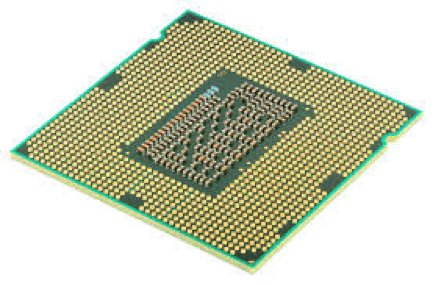
Network performance in a virtual world
With the growth of Network Function Virtualisation (NFV – running network software on general purpose computer servers) many of the network devices will no longer be running on customised dedicated hardware. This will require a new approach to understand the implications of VNF on expected network performance which is needed for capacity planning.
On the one hand we can have many apps running on the same server hardware and reconfigure when we want to change the function thereby saving the cost of owning and running many pieces of equipment (a bit like app store and apps on your smart phone).
On the other hand we have less specialised hardware for the network function being used so the efficiency of the software we use on the server CPU becomes much more critical.
Of course, the answer is “it depends”, but as more testing is carried out we are starting to see pointers and measurements to help with this discussion.
Before Virtualisation – The networking industry for the past 20 to 30 years has been making network equipment which works well for certain traffic types and applications with the available hardware. Once the equipment has been produced then it has to be tested to ensure it can perform and also to understand capacity planning guidelines.
Testing network equipment – This has involved generating realistic network traffic patterns to show the effectiveness of the equipment, and of course once in production, monitoring a live network to make sure the assumptions are reasonable accurate. In some cases varying packet sizes on tester would produce unexpected results as the packet reached a size which exceeded the equipment processor (ASIC) parameters and caused the packet to be segmented. As ASICs have become faster these anomalies have become less significant.
Independent testing – organisations such as the European Advanced Network Test Centre (EANTC) have been involved in providing customers with test results of different vendor network equipment for many years. This independence gives businesses reassurance and validation of vendor claims about their equipment.
With Virtualisation – with the arrival of Network Function Virtualisation (NFV) the same software that has previously run on customised appliances (routers, switches and appliances) can be run on standard servers. We now need to understand what the expected performance will be without using the specialised ASICs to boost throughput for various network functions.
Network Software flexibility – Businesses demanding for more flexibility in their networks is driving the networking industry to offer networking functions as software apps to run on general processors and to provide programming interfaces (APIs) so that they can be automatically controlled. The benefit is that this capability provides the flexibility to be able to use the same equipment for a variety of uses by simply reconfiguring or reprogramming the app. This can be achieved automatically and quickly using the open APIs and programming languages
Processor characteristics – as Intel brings out a new processor with faster  CPUs, more cores and more memory, the behaviour and throughput of a network app can be tested against those CPUs.
CPUs, more cores and more memory, the behaviour and throughput of a network app can be tested against those CPUs.
Testing – There can be several network functions (firewall, router etc) on a server which need to interact with each other using a virtual switch inside the server, and the efficiency of this switch will have a key impact on the throughput of the VNFs
What to measure in a VNF – the CPU will have a certain number of cycles it can perform per second so measuring the clock cycles per packet can be used to assess the throughput of a server CPU
Cisco’s Vswitch – Cisco has developed a virtual switch called Vector Packet Processing (VPP) which has been used in IOS-XR and is being used in many new Cisco virtual network apps. This provides highly scalable Vswitch capability with potential of throughput of 40Gbps per CPU core
Independent testing – Cisco has worked with the EANTC to measure various functions in the EANTC NFV Infrastructure model. The virtual switch component of this model has been the initial focus with testing of Cisco VPP and the alternative product Open Vswitch. Cisco is putting considerable effort into the open software push with John Chambers supporting this move in March 2015
http://www.eantc.de/public-reports/cisco_service_provider_virtualization_and_cloud_portfolio.html
The results of more recent testing in October 2015 requested by Light Reading and carried out by EANTC, show Cisco VPP being tested as part of the NFV portfolio
http://www.eantc.de/public-reports/validating_ciscos_nfv_infrastructure.html
The results showed that VPP was “much more consistent and reliable” than the alternative OVS
http://www.lightreading.com/nfv/nfv-tests-and-trials/ciscos-vswitch-makes-the-grade/a/d-id/718717
These results show that Cisco is taking the open and virtualised networking market extremely seriously and also leading with developments to enhance the NFV marketplace.
The Future – This kind of testing will need to be repeated as Intel produce new CPUs and as new network services are virtualised onto standard server hardware.
Retesting – this is made much more simple as the automated test cases used to test the initial performance on a CPU can be rerun on new CPUs.
Cisco commitment to Software – Cisco is investing heavily in bringing new apps and services to the NFV table to give businesses the widest choice and flexibility for their business needs. In addition it is bringing to bear its skills and experience in developing networking architectures to the virtualised environment and I expect this to help the Open Software community product stability.
And lastly, the testing efforts described above, with the open software community and independent test organisations, will help provide assurances that this new flexible approach to networking can be relied upon where it is appropriate.
1 Comments




Hi to all, the contents existing at this web page are in fact awesome for people experience, well, keep up the nice work fellows.